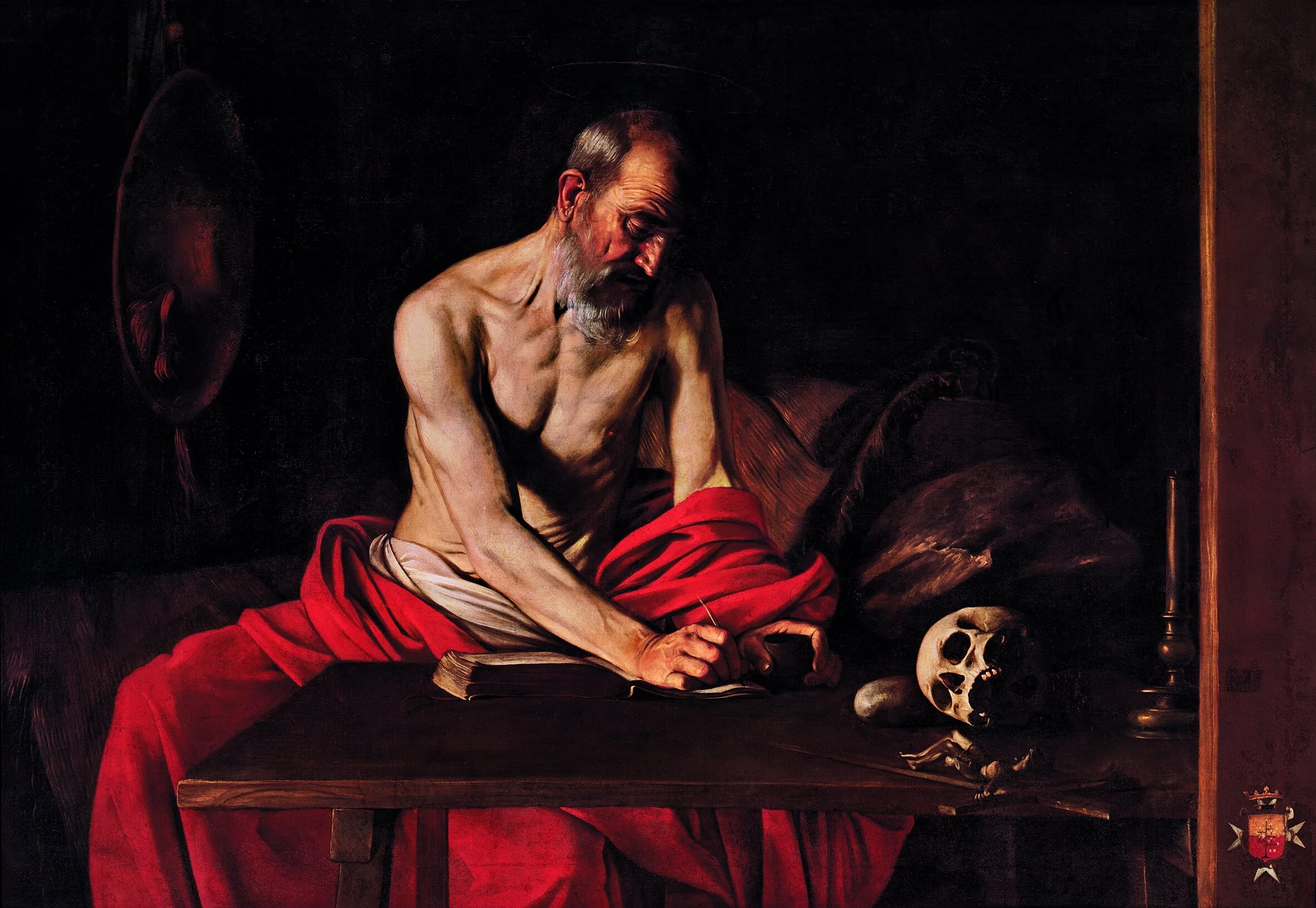From Scriptures to Senses: The Dawn of Translation Across Cultures
Bert Nguyen
Associate Language Manager and Copywriter at Flynde
The beginning of translation, either in the East or the West, had something to do with faith and beliefs.
The Genesis of Western Translation Tradition
In the West, the debate over literal versus pragmatic translation dates back to the time of Cicero (circa 1st century BCE). The Roman rhetorician explained his method of translation in De Optimo Genere Oratorum, advocating a sense-for-sense approach. This idea was later echoed by the contemporary Greek poet Horace, who, in his influential work Ars Poetica, emphasized the goal of producing aesthetically pleasing translations.
St Jerome Writing by Caravaggio
These opened the door for St. Jerome (circa 4th century BCE), who is widely considered by Western scholars to be the patron of translators. He was the first to translate the Hebrew Bible into Latin, producing the Latin Vulgate. It’s worth noticing that there had been other Bible translations at that time such as the Greek Septuagint. Yet Jerome regarded this work as of inferior quality and full of errors and distortions. His death day, 30 September, is chosen by the International Federation of Translators (FIT) and the UN as World Translation Day.
The Rise of Translation in the East
If the cornerstone of translation in the West is honed by the need to spread Christian texts, its dawn in the East came from the propagation of Buddhist sutras. And just like in the West, the first translations in Asia had gradually shifted from a word-for-word approach to a sense-for-sense one. According to translation researchers like Eva Hung and David Pollard, the peak of the methodology was in the Eastern Han and the Three Kingdoms Period (circa 148 - 265).
Xuanzang’s portrait at Brooklyn Museum
Then, under the Northern and Southern (circa 265 -589), Kuramajiva pioneered translating the sutras from Sanskrit into Old Chinese. He also paved the way for what is known as 意义(yìyì - meaning). With this method, he extensively changed the sentence syntax to break the chain of word-for-word literalness. In short, he was going toward a more friendly translation for target readers.
Journey to the West (and back)
Fast forward to the Sui, the Tang, and the Northern Sung Dynasties (circa 589 - 1100), there was a monk who spent his 17 years on the quest to India. What’s his purpose? Acquire the sacred sutras. His name was Xuanzang (also known as Tripitaka), and no, he didn’t have any monkey, any pig, or any demon to make his company. Not only reached India, but he also stayed in the country for two years to study with Master Śīlabhadra in Nalanda.
With his linguistic, cultural, and religious knowledge, Xuanzang translated and edited tons of sutras into Old Chinese. He proposed The Five Untranslatables (五種不翻), or five types of textual features better transliterated. Interestingly, he cleverly gauged the source and target languages to refine these translations, which is something modern translators still do very often. That’s why Xuanzang wasn’t just a monk-turned-backpacker, he was an academic and a translator in all terms.
Through figures like St. Jerome in the West and Kuramajiva and Tripitaka in the East, the art of translation was deeply intertwined with religious dissemination. Their legacies continue to influence how we approach language and meaning today.
COFFEE WITH BERT
This is to bring you the richness of global traditions straight to your desktop.
Join Bert Nguyen - one of our copywriters, as we journey beyond borders—celebrating diversity, bridging cultures, and uncovering the stories, places, and people that make our world so fascinating.



